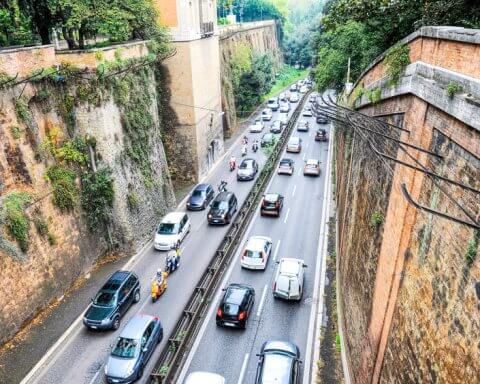Home to 3.2 billion people, the BRICS countries – Brazil, Russia, India, China and South Africa – loom large in any consideration of the world’s prospects for averting climate disaster. They are not the poorest economies on the planet, but their per capita GDP is 20% of European Union levels and only 13% of G7 levels.
These five countries account for more than half the total emissions of the 43 countries in the G20. Modernization increases the demand for energy services that, all else being equal, can translate to growth in greenhouse gas (GHG) emissions. But all else is not equal: per dollar of GDP, BRICS emissions are nearly four times higher than in the EU and G7 economies, reinforcing the strategic links between economic development, energy productivity and decarbonization.
As a group, the BRICS Earth Index for 2019 is –95%, indicating that their emissions went up by about the amount they needed go down to be on track for their long-term net-zero commitments. China and India together make up 82% of BRICS emissions. Both countries posted increases in all sectors in 2019 and don’t anticipate their emissions coming down until after 2030.
Brazil
In Brazil, emission reductions in the power and buildings sectors were the main reasons for a drop in greenhouse gas emissions in 2019 but were still less than half what would have been needed to be on track for their 2030 target. And the Earth Index understates the “say–do” gap in Brazil as it does not include the impact of deforestation. Brazil has the dubious distinction of being the only major emitting nation to increase its emissions during the pandemic, with unsustainable logging of the rain forest adding 9.5% to the country’s net emissions in 2020 – over five times more than the reductions achieved in all the other sectors in 2019.
Russia
In 2019, Russia had one of the most GHG-intensive economies in the G20, reflecting the nation’s heavy dependency on oil and gas, low levels of energy efficiency, and outdated technology and infrastructure. Emission reductions in 2019 were four times lower than required by their own lacklustre target. Given the heavy sanctions it faces due to its invasion of Ukraine, Russia now seems destined for a deep and prolonged economic decline, with uncertain implications for the future of the country’s climate change response.
India
India has the lowest per capita GDP of the G20, a population of 1.4 billion, a power sector that is 80% dependent on fossil fuels, and industrial and agricultural energy productivities that are the lowest in the G20. The flip side of those metrics is unparalleled possibilities for decarbonization through growing the carbon-free electricity supply and improved energy efficiency, including in the production and use of modern biofuels. India’s recent stimulus investment in economic recovery is targeting solar photovoltaics and battery development, but this is undermined by continued investment in old and new coal-fired power.
China
The application of renewable energy and the electrification of vehicles are growing faster in China than anywhere else in the world, but coal-fired power is also growing faster here than anywhere else. The net effect was a whopping 434-megatonne increase in GHG emissions in 2019, earning an Earth Index of –133%, even when measured against China’s long-term target of net-zero emissions by 2060. Chinese cleantech may be helping other countries to decarbonize (particularly since it stopped issuing loans for the development of coal power plants abroad last year), but by building more coal-fired power plants at home, it is locking in emissions growth until 2030 or later.
South Africa
A late-joining member of BRICS, and by far the smallest economy in the group, South Africa’s emissions increased in every sector in 2019, earning the country a –62% Earth Index. South Africa is a coal country, and the power sector accounted for 41% of its GHG emissions in 2019. South Africa is well endowed with renewable energy resources, including one of the best solar regimes in the world. Slow off the mark, with only 5.5 megawatts of solar photovoltaic energy by 2020, the Renewable Energy Independent Power Producer Procurement Programme is growing very quickly now, with a target of 8,400 megawatts of solar generation by 2030, enough to power 1.5 million households.
As with all countries, the cost of climate change itself is growing quickly for BRICS. As a group, they are more vulnerable and less ready to cope with the storms, floods and droughts that come with global warming. On a global basis, the most cost-effective opportunities for decarbonization are concentrated in the BRICS countries and other developing economies, underscoring the necessity and urgency of increasing investment flows to these emerging economies.
Ralph Torrie is the research director at Corporate Knights.













